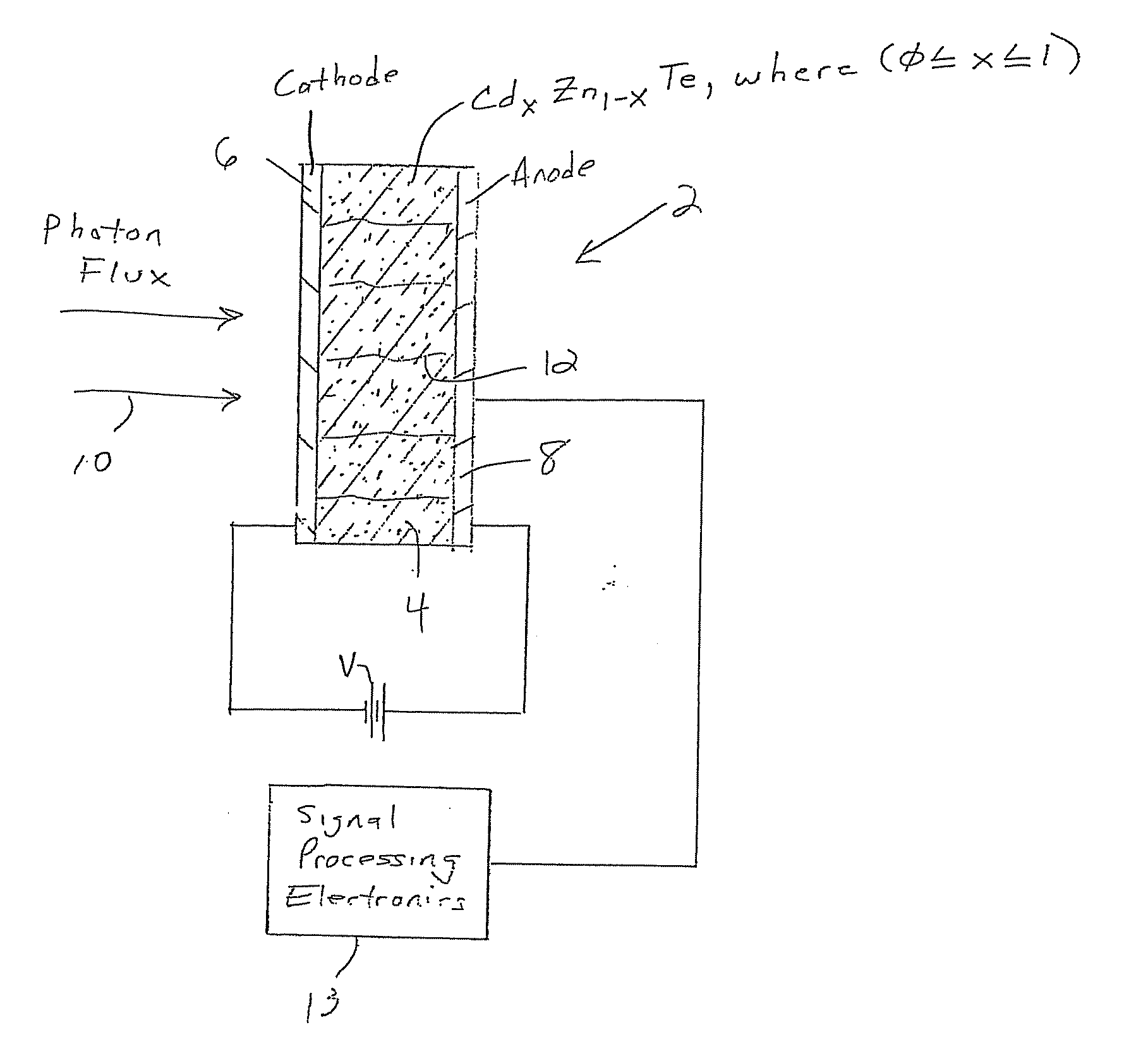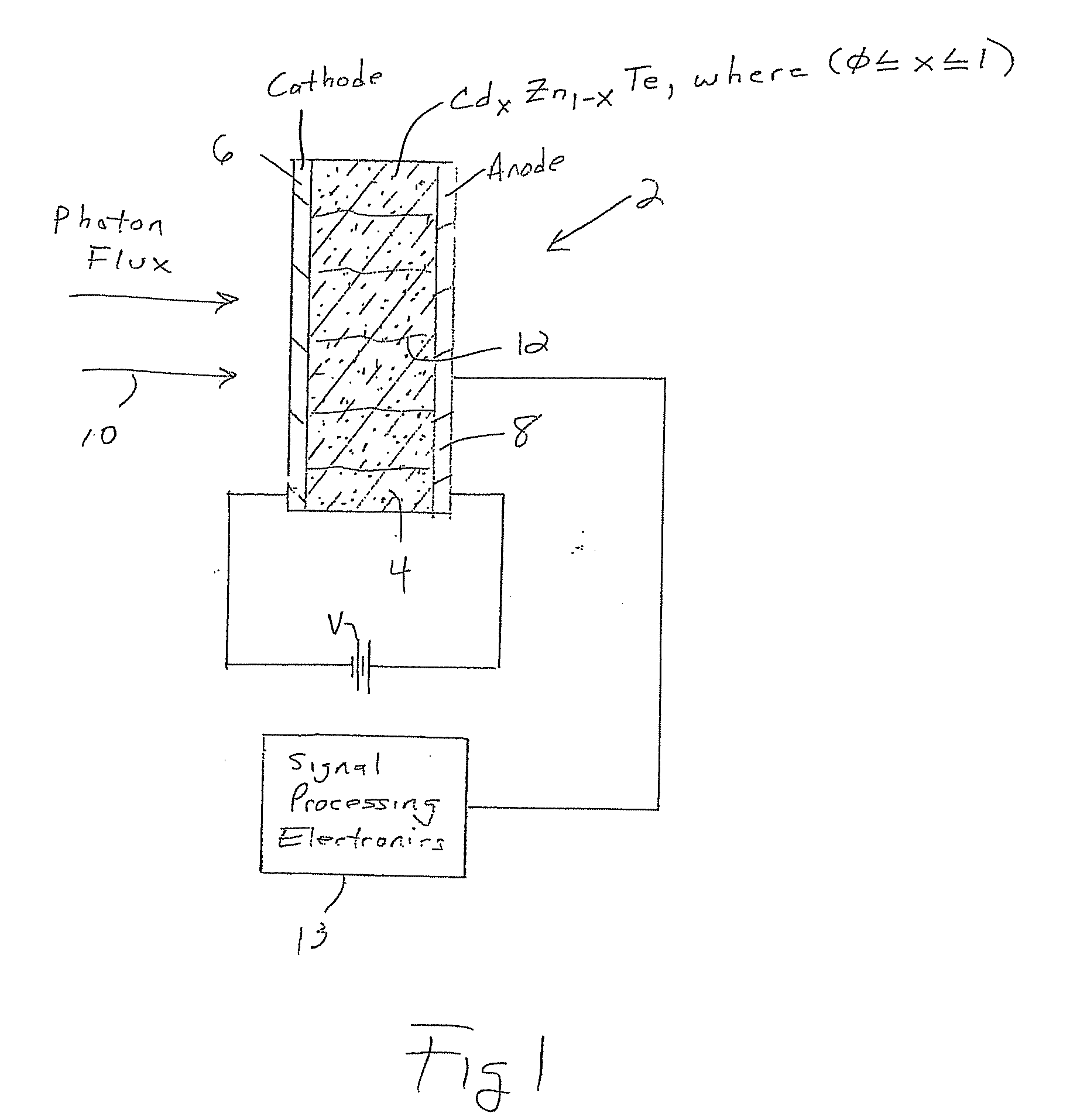CdZnTe Device Using Constrained Design For High-Flux X-Ray Spectroscopic Imaging Applications
a cdznte and x-ray technology, applied in the direction of radiation controlled devices, instruments, optical radiation measurement, etc., can solve the problems of reversible count paralysis failure, high count rate of photon flux fields within the cdznte detector,
- Summary
- Abstract
- Description
- Claims
- Application Information
AI Technical Summary
Problems solved by technology
Method used
Image
Examples
Embodiment Construction
[0020]The present invention will be described with reference to the accompanying figures where like reference numbers correspond to like elements.
[0021]With reference to FIG. 1, a CdZnTe single crystal detector 2 includes a core material 4 of Cd1-xZnxTe, where (0≦x6 and a conducting anode terminal 8. Cathode 6 can be continuous or pixilated. Similarly, anode 8 can be continuous or pixilated. Cathode 6 and anode 8 are biased by a DC voltage V in a manner known in the art whereupon an electric field 12 is produced between cathode 6 and anode 8 in core material 4. In response to interaction between core material 4 and photon flux 10 (e.g., without limitation, x-ray radiation) entering core material 4 via cathode 6, electron-hole pairs are generated in core material 4. Electric field 12 attracts electrons generated in core material 4 to anode 8 for detection and processing by suitable signal processing electronics 13, which converts the electrons attracted to anode 8 into a number of co...
PUM
 Login to View More
Login to View More Abstract
Description
Claims
Application Information
 Login to View More
Login to View More - R&D
- Intellectual Property
- Life Sciences
- Materials
- Tech Scout
- Unparalleled Data Quality
- Higher Quality Content
- 60% Fewer Hallucinations
Browse by: Latest US Patents, China's latest patents, Technical Efficacy Thesaurus, Application Domain, Technology Topic, Popular Technical Reports.
© 2025 PatSnap. All rights reserved.Legal|Privacy policy|Modern Slavery Act Transparency Statement|Sitemap|About US| Contact US: help@patsnap.com



